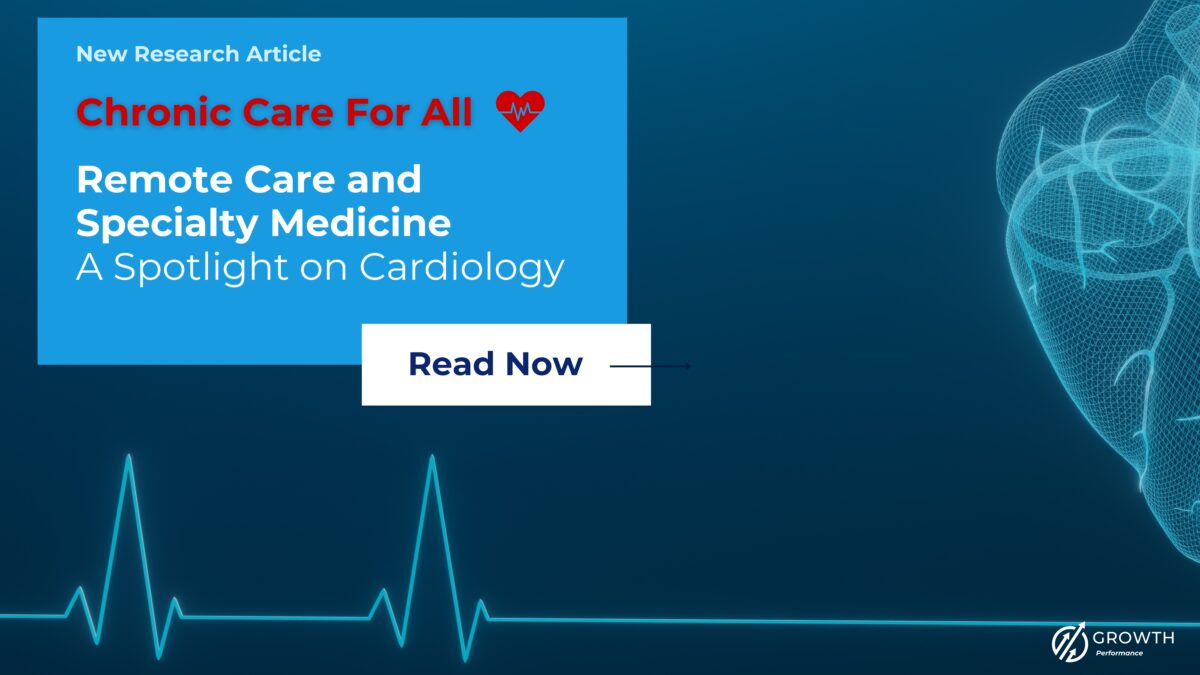Chronic Care for All
– In this thought leadership series on chronic care management and remote physiologic monitoring, we explained new CMS policy allowing concurrent CCM and RPM billing for qualified patients, followed by an examination of how chronic care dominates healthcare spending in the U.S., and the opportunity to embark on value-based care revenue streams through MIPS and ACO programs available to all physicians with chronic patients.
Here, we turn to specialty medicine. Cardiologists are positioned to embark on CCM, RPM and value-based care models. And remember, within the CCM family of codes, Principal Care Management is allowed concurrent with RPM and provides a single chronic condition specialty-specific option with increased reimbursement rates. Also, for cardiologists, there are advanced payment models as exampled below that fit your practice and patient population.
According to a May 2024 report by the National Council on Aging, 60 percent of older Americans suffer from hypertension, identified as the council’s top chronic condition. Likewise, the CDC rates hypertension as the second most common – and most costly – chronic disease behind obesity.
Yes, primary care physicians can help patients manage hypertension, but escalations into heart disease, the CDC’s most common cause of death in the U.S. for Americans 65 and over, and the second highest cause for Americans 45 to 64, means high-acuity patient care lends to CCM, RPM and value-based care across all payers.
Market Dynamics Squeezing Cardiology
Data on total cost of care and payer shifts to lower reimbursement settings for procedures are among the dynamics pressuring cardiology and heightening the need for value-based care solutions.
In another May 2024 report, this by the consulting firm Avalere, it found that total annual 2020 cost of Medicare Parts A and B beneficiaries with a heart condition was $15,186 compared to $4,001 without.
As costs inevitably increase, insurers and CMS in rulemaking, are moving cardiology procedures to lower cost/reimbursement Ambulatory Surgery Centers (ASCs). All payer data combined shows a seven percent increase in ASC settings for cardiology procedure volume as of 2022 and a nearly four percent interventional procedures shift specifically away from hospitals. CMS has led this shift by adding nearly 20 cardiac catheterization codes and six percutaneous interventions to ASCs, for example, a trend widely expected to grow.
Cardiology and Value-based Care
To counter any or all market dynamics impacting cardiology fees, and as much to join or advance the needed movement to value-based care to stem the rate of rising costs and fee-for-service stagnation, where’s a cardiologist to go?
Here’s just one idea within Medicare. Unlike the required participation rules of MIPS, Medicare’s Bundled Payment for Care Improvement Advanced (BPCI Advanced), is voluntary.
It is one of the few, if not the only, Medicare model recognized as an alternative payment model with specific cardiology episodes. And cardiologists are participating. As of 2023, cardiology tracks amounted to 25 percent of all episode selections via CMS data.
Quality measures are focused on care coordination, speaking to patient experience and access to care. There are flexibilities around inpatient, outpatient and multi-setting episodes and a retrospective payment. The program can encompass from hospitalization to 90 days post discharge. We won’t try to parse every detail of what you know can be complex – and often risk-based – programs, but the participation of cardiologists is encouraging.
Cardiology Gains and RPM
During our due diligence on remote care and cardiology, we tracked the implementation of an RPM program at a cardiology practice in rural Georgia. Even this modest-sized practice was able to enroll more than 30 new patients per provider per month after moving to an automated RPM platform while also increasing patient care plan compliance rates.
All told, the practice increased Medicare reimbursements by 30 percent for an impressive 13,000 percent ROI. From there, the practice is examining the addition of CCM care and in our opinion is showing the strength to succeed in VBC models or even negotiate its own quality model with payers.
Specialists of all types should understand the glide paths that exist within RPM, CCM and value-based care. Payers are willing to reward quality and care coordination, knowing patients are being enrolled, and patients themselves are compliant in a structured approach that combines monitoring and personal communication.

